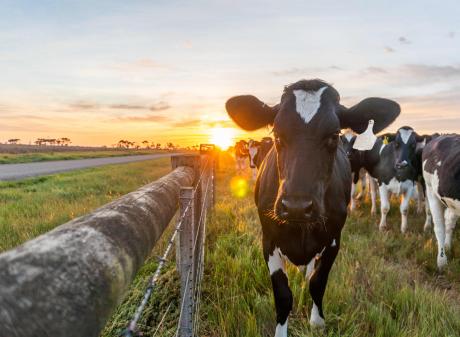
Oamaru veterinarian Dave Robertson, resplendent in a captain’s hat, came up with a novel approach to presenting a paper - for which he won the best practitioner presentation award - at the recent New Zealand Veterinary Association conference in Christchurch.
Mr Robertson is a partner at The Veterinary Centre which contributed seven papers at the conference; he presented two, Mat O’Sullivan one, and Ryan Luckman four.
Veterinary Centre director Simon Laming, who describes it as a "big little business", was delighted with the achievement.
He said it was still a local privately-owned business and not a corporate, and it was focused on local business and local communities.
Its vets were sought after to present to industry organisations, New Zealand and international conferences, and universities.
"Who would have thought a one-man veterinary practice which opened in the north end of Oamaru in 1980 would have grown into this - a veterinary practice with a vast depth of expertise in farm animal and companion animal fields, leading many areas of productive medicine."
Mr Robertson, who has a long-standing passion for working with sheep, has developed a simple formula on the five principles of worm control.
While there was nothing new in it, he had found that getting them in order, using the acronym AIR MED, had helped him and the clients he worked with and also other vets.
The most common question from clients about worm control was what drench to use, but he suggested turning that around and taking a whole farm-system view of how stock were managed to avoid parasite challenges.
Drench was part of it but, if you could develop a system where the worm challenge could be avoided, "that’s where the gold is", he said.
In summary, it was initially about avoiding the worms, integration with other stock, refugia - a worm population that could reproduce without being exposed to drenching - monitoring, and effective drench.
About 3500 egg counts went through the clinic last autumn, whereas in the past there had been hardly any, and so that was encouraging.
If drench was going to be removed out of a system, then monitoring was the key. A higher stocking rate system had been built based on the ability to kill worms with drench so monitoring was important, he said.
Mr Robertson also presented a paper on pain relief for tailing and castration of lambs. He had written a literature review for the Society of Sheep and Beef Cattle Veterinarians, looking at the different options available and merged that with several years working with farmers to come up with options that would work for them, to be compliant with the Responsible Wool Standard.
It was not just about the drugs that were used but about the whole process and procedures and, when he talked with farming groups, he suggested a welfare officer was delegated to not only look after the drugs but to make sure things were going well.
He did a survey of 19 farmers who applied pain relief and produced various data points to give feedback to vets on what farmers used and whether they noticed a reduction in pain.
There was still a lot of work to be done and a prescribed training and auditing system needed to be set up for vets to follow with clients wanting to pursue pain mitigation. It was about trying to get an improvement for the lamb while ensuring it was also not a hassle for the farmer, he said.
Mr Robertson has also been involved in looking at shearing cuts; some wool contracts have required that cuts be treated and documented, and he has produced resources to help. Everyone wanted good outcomes, he said.















